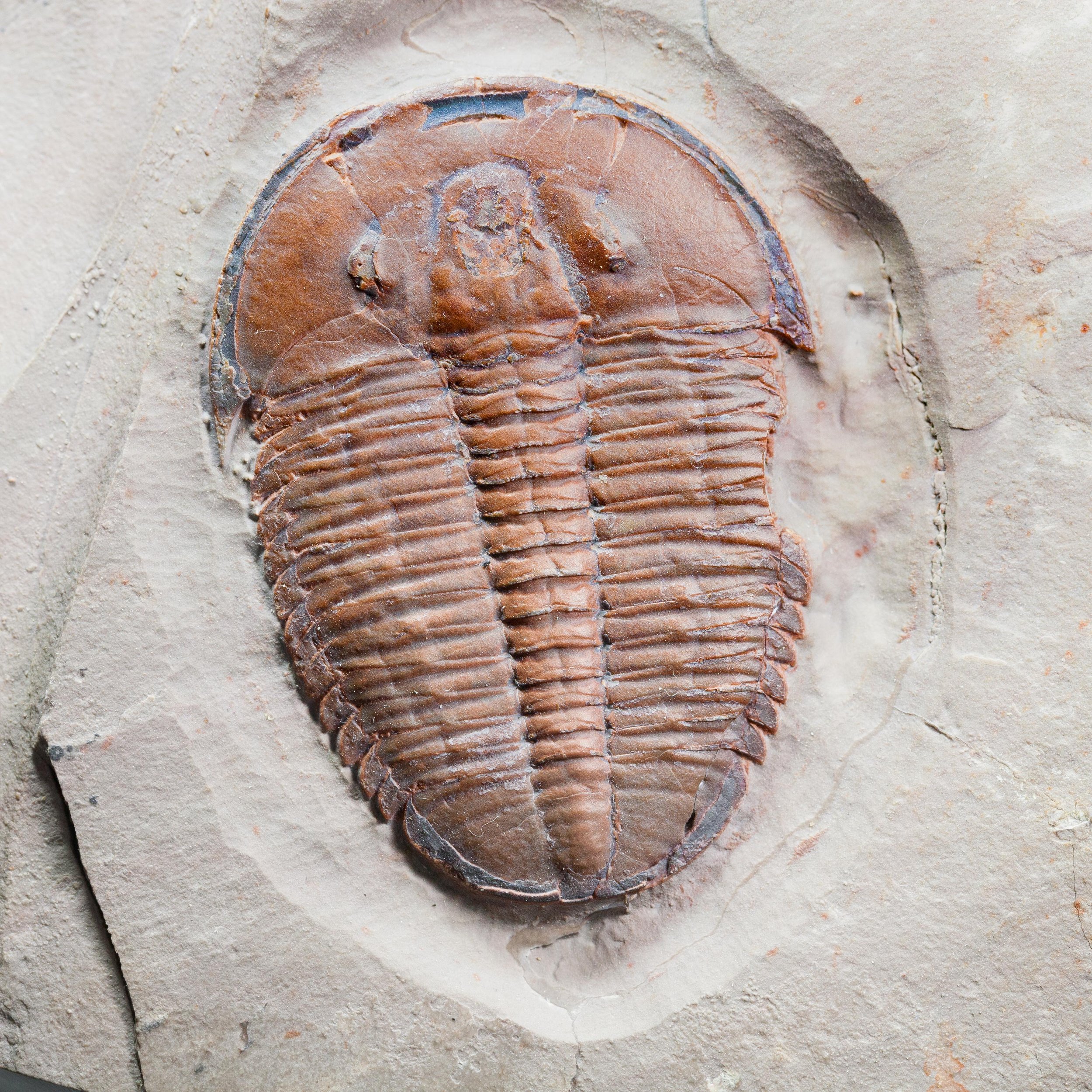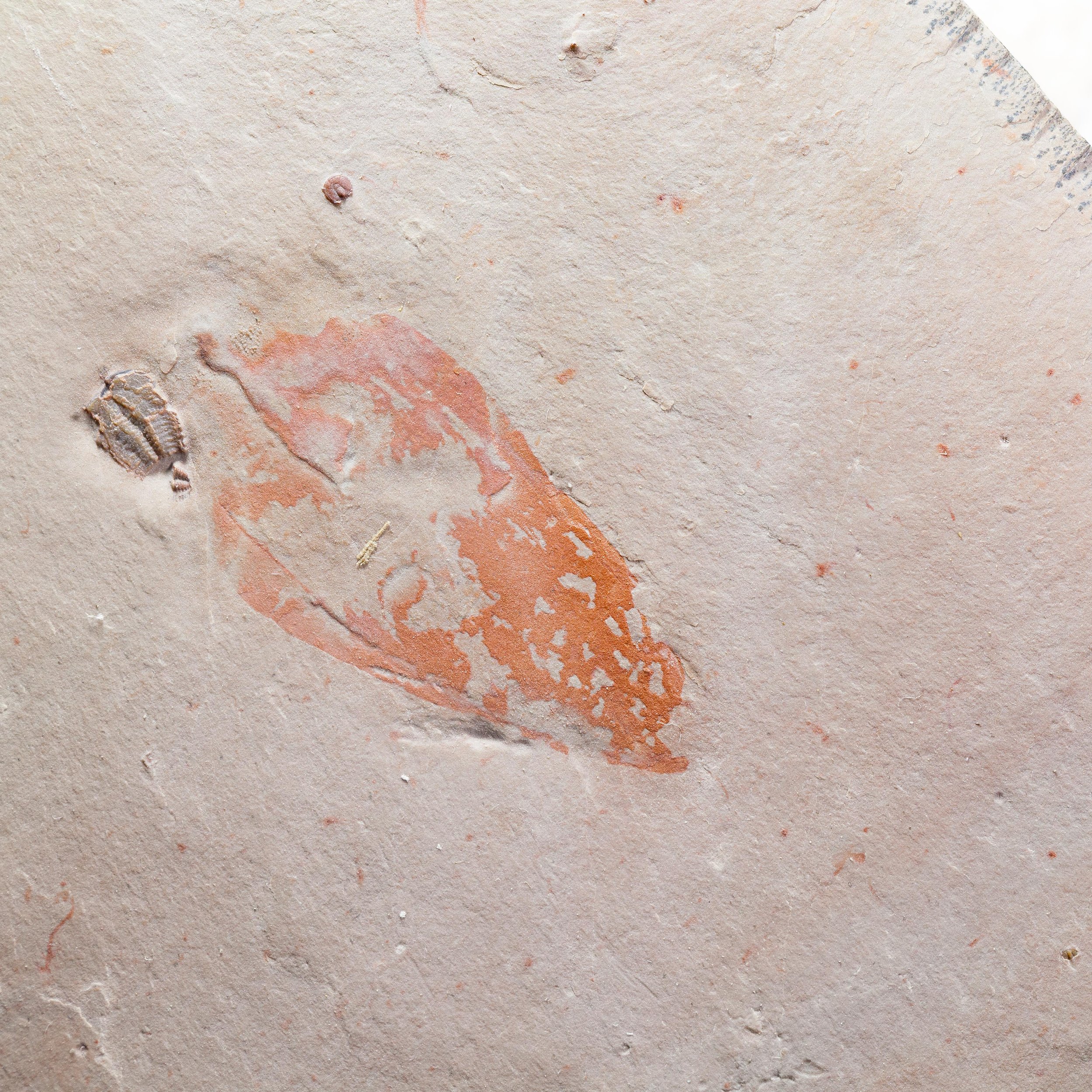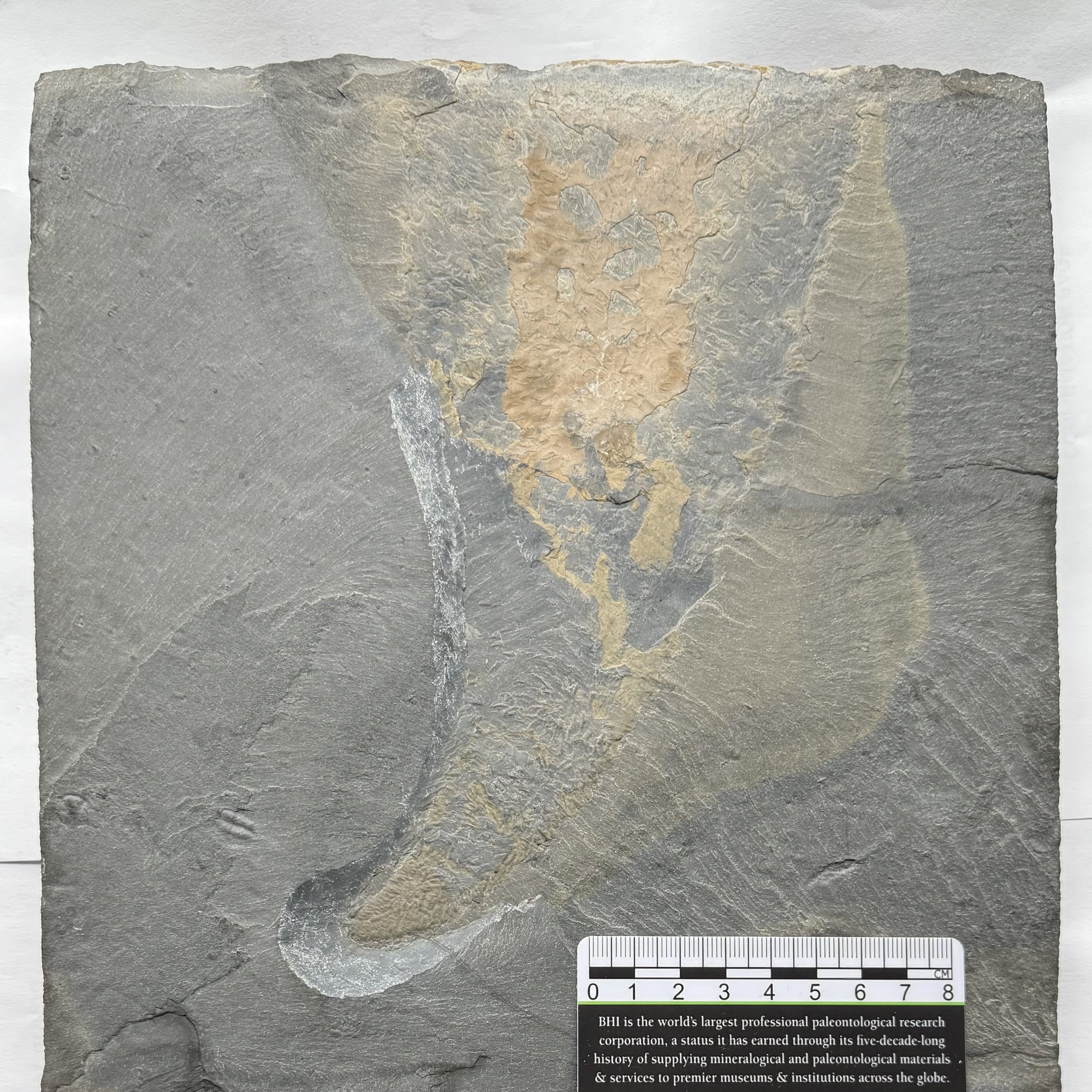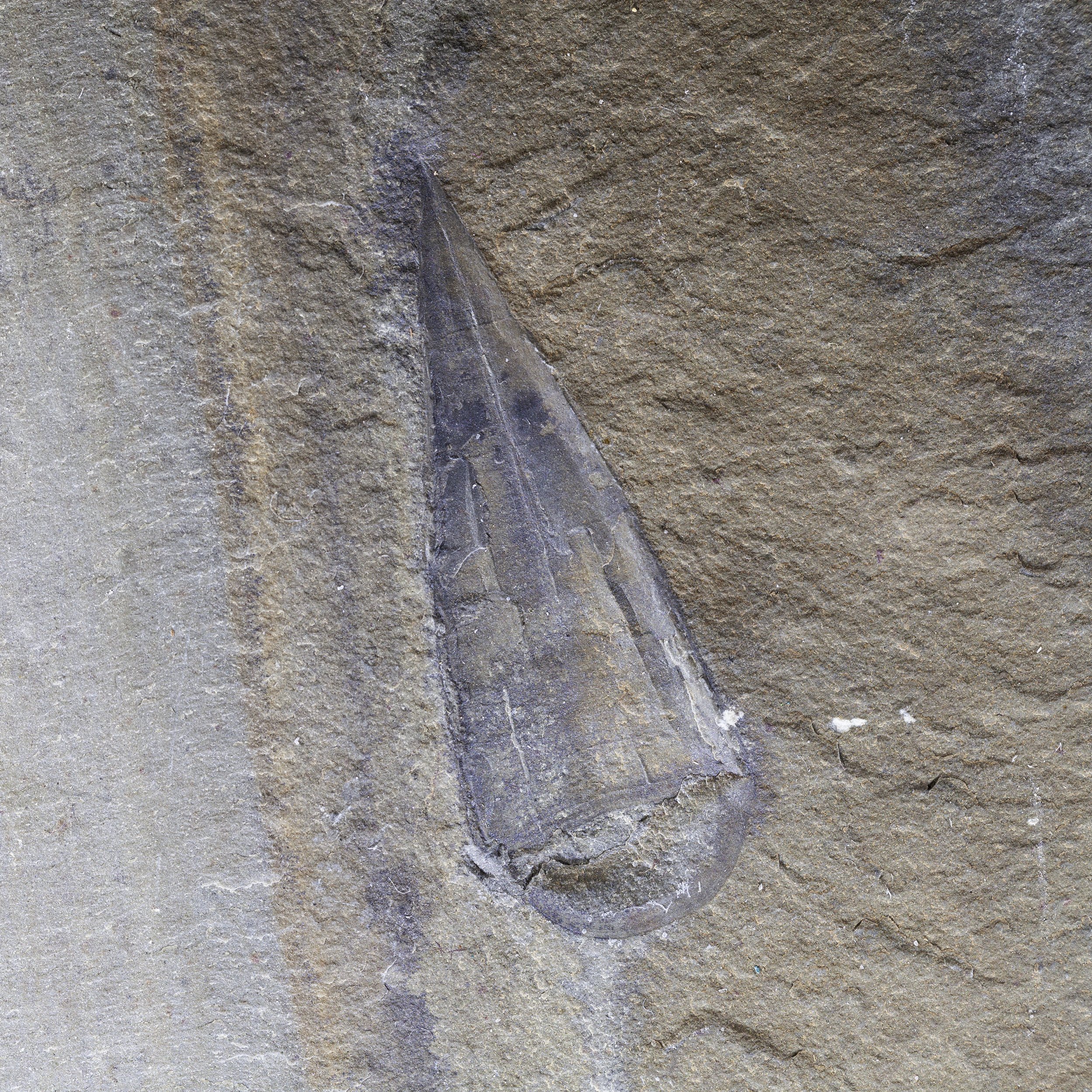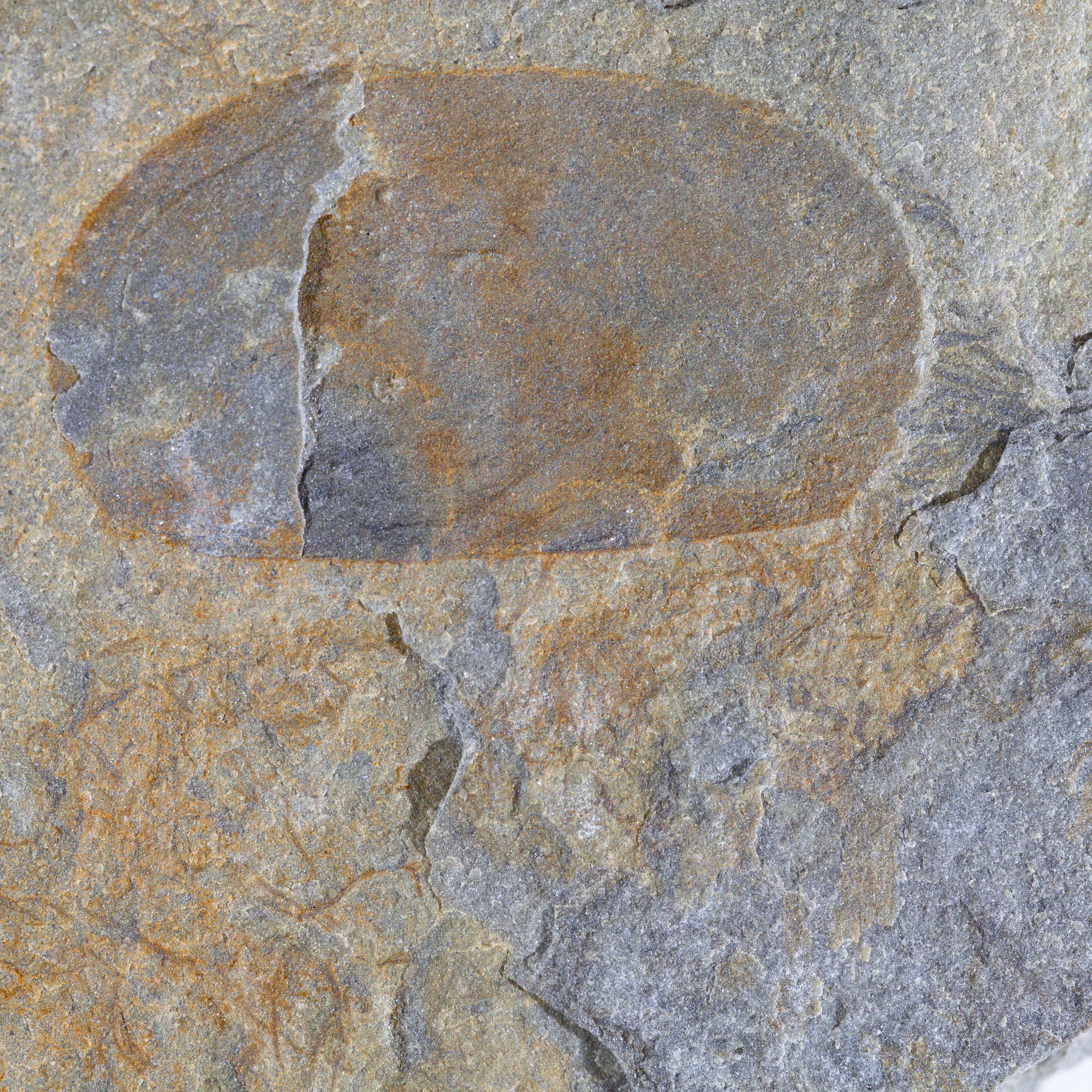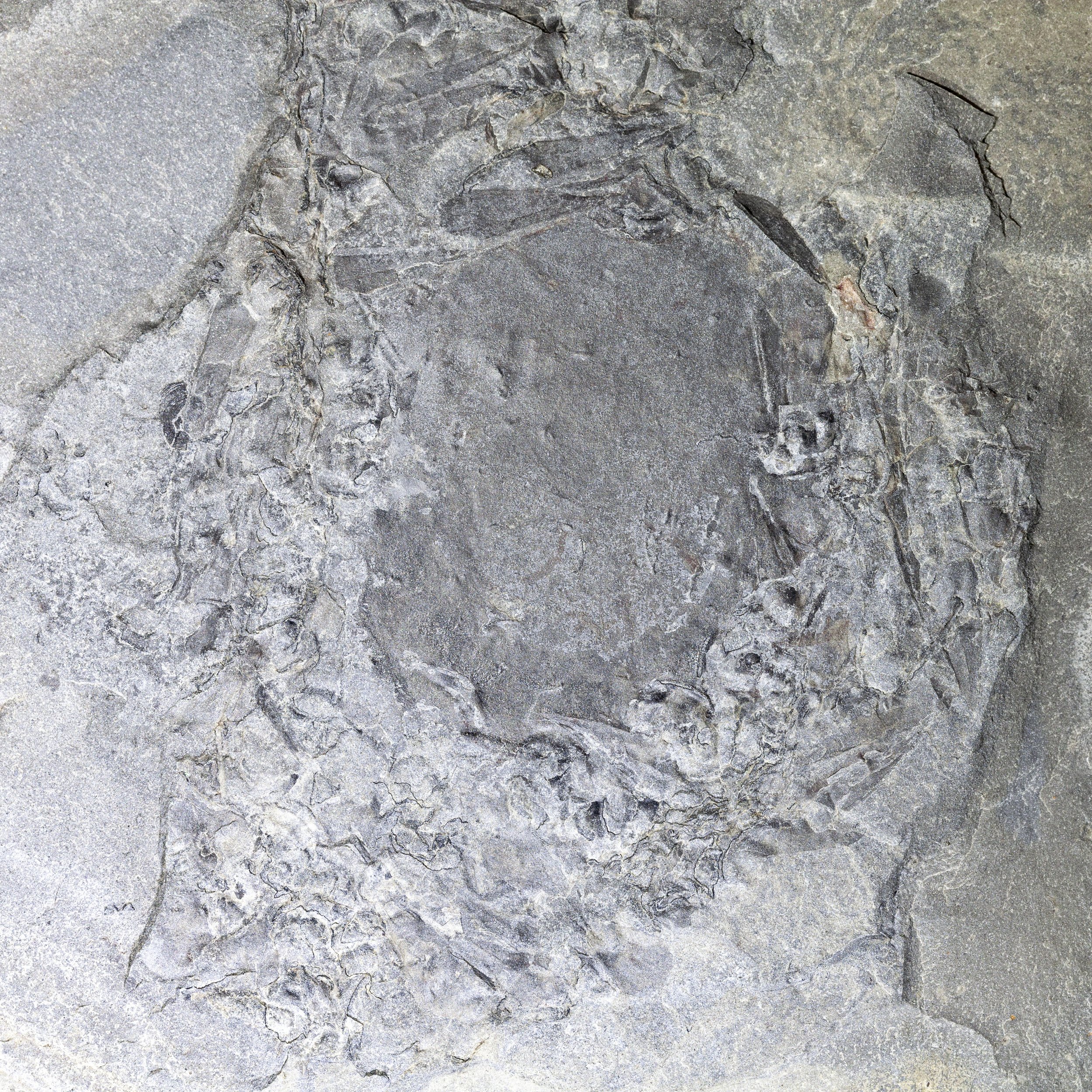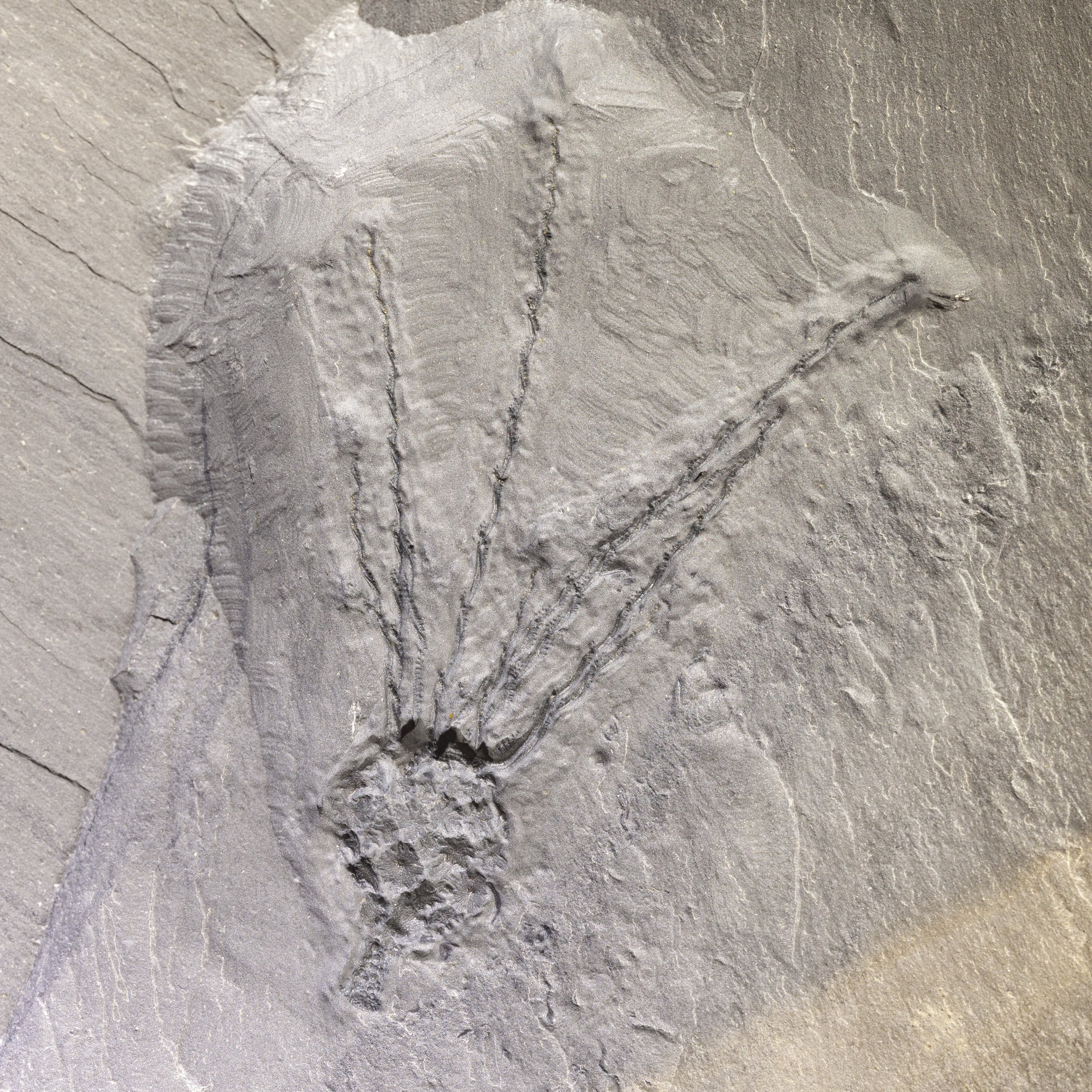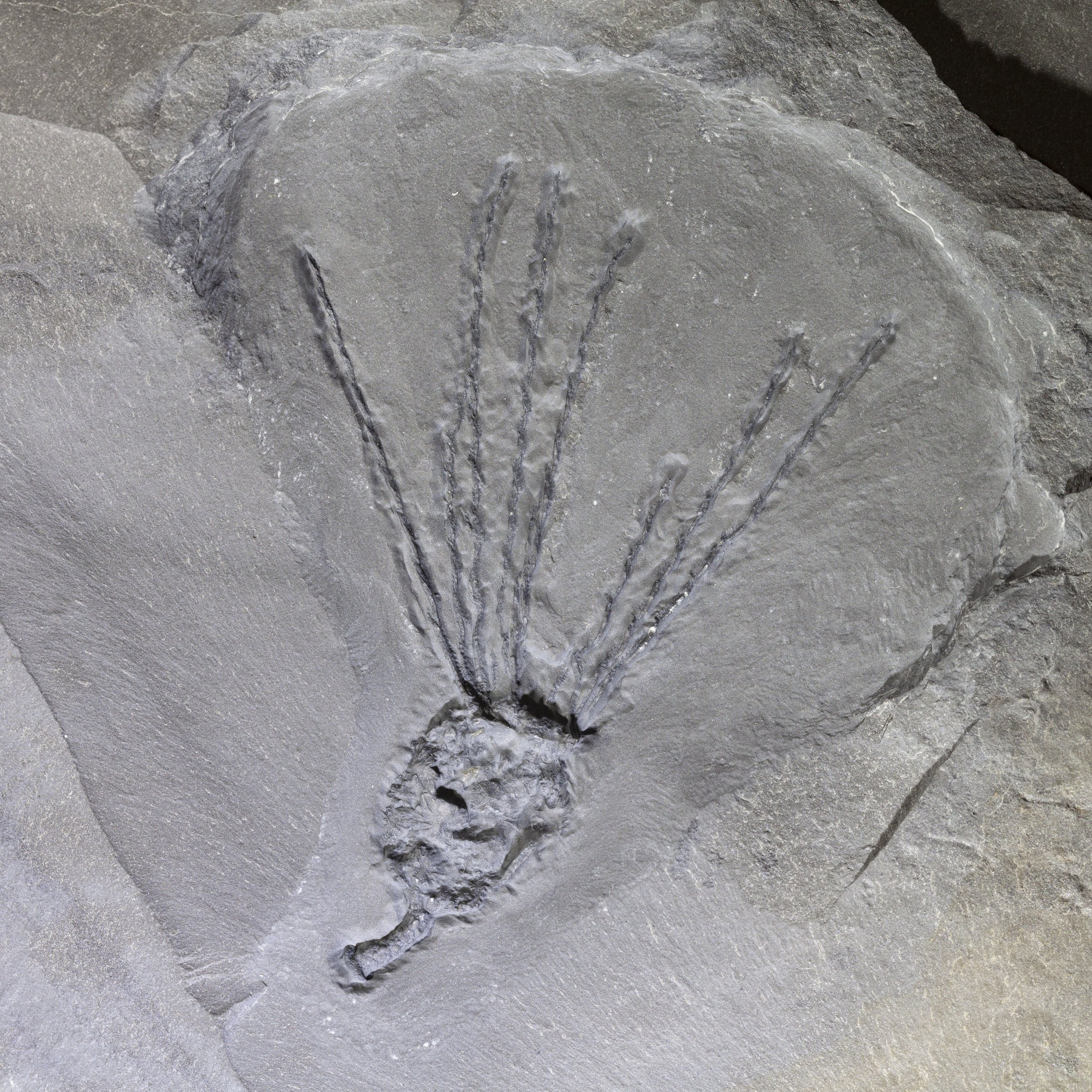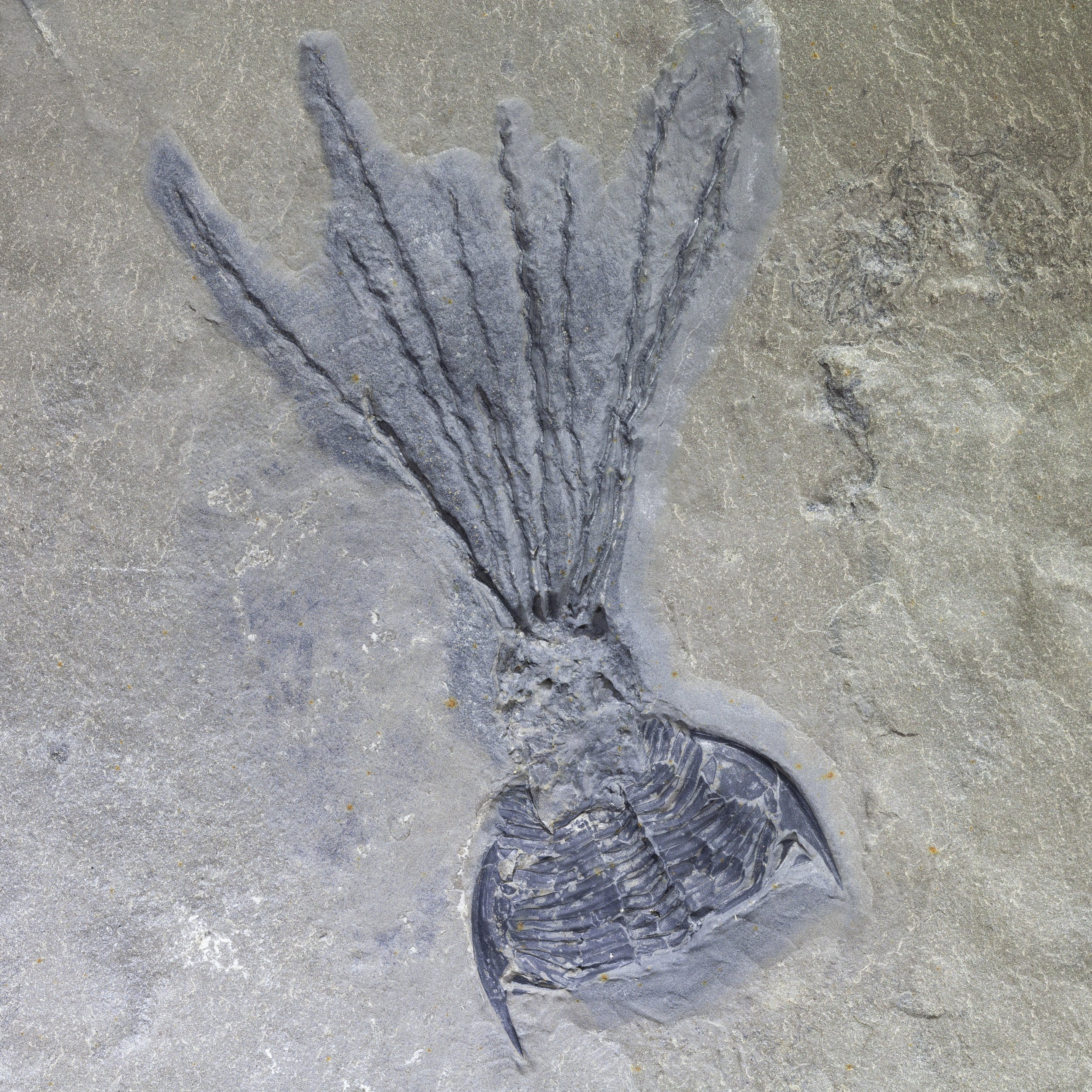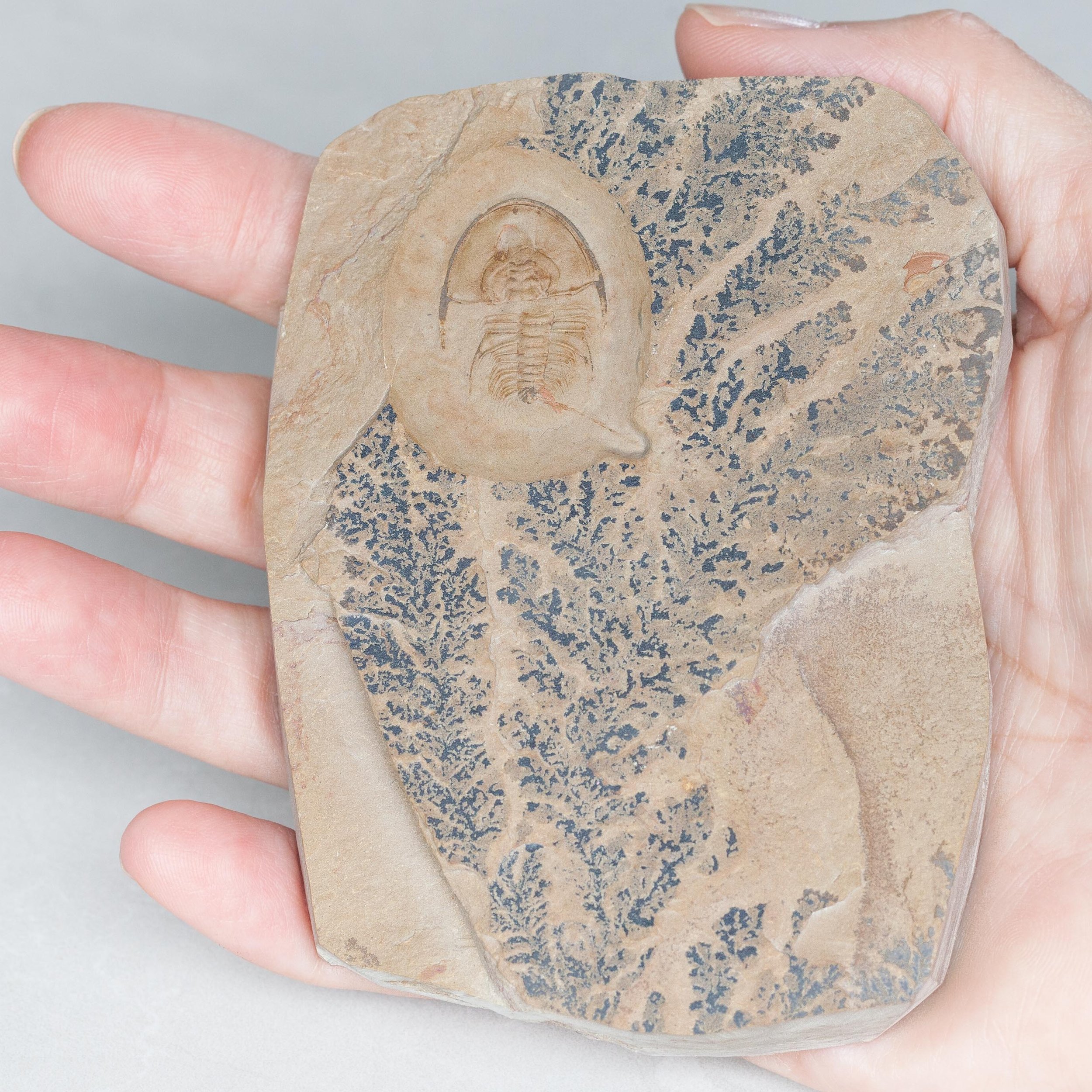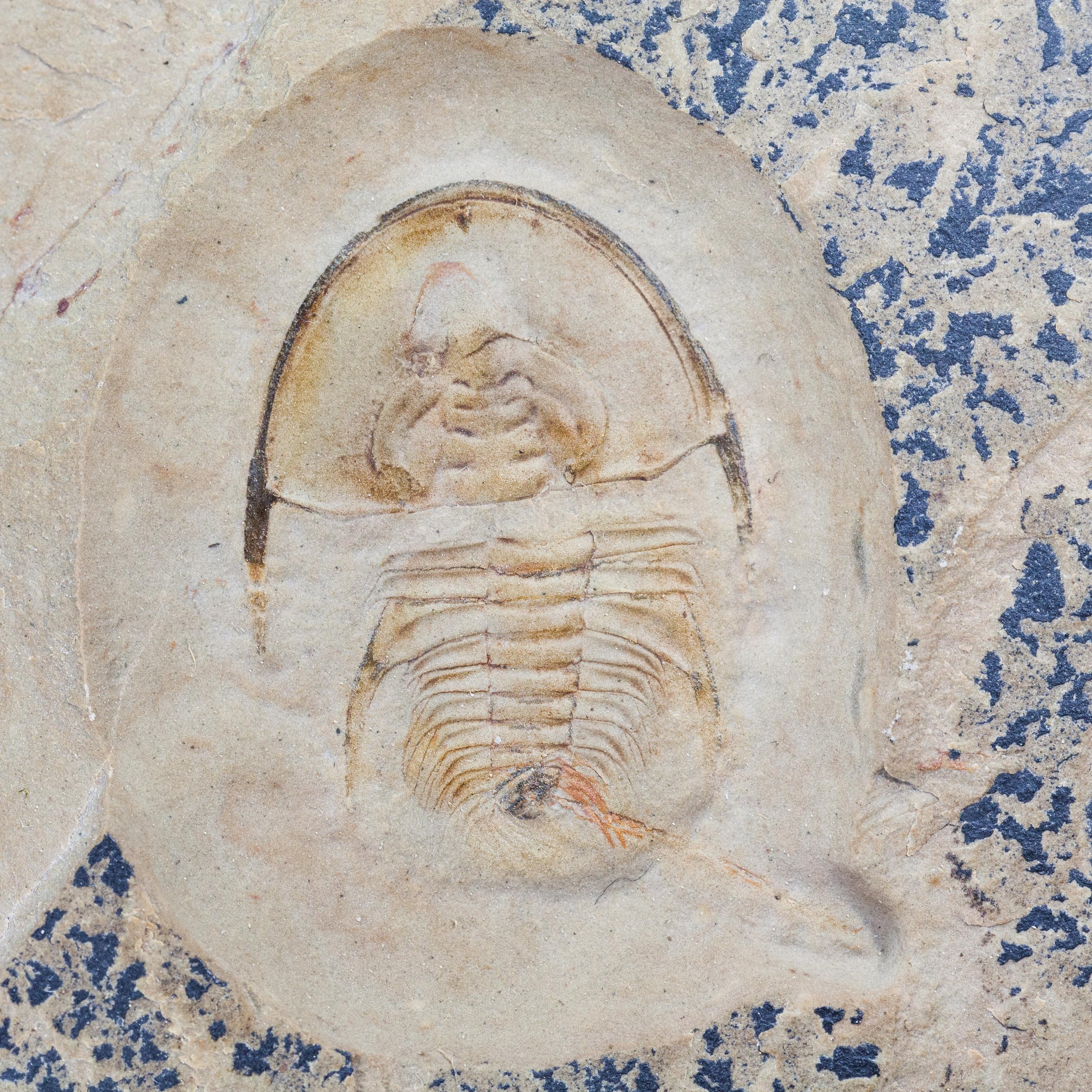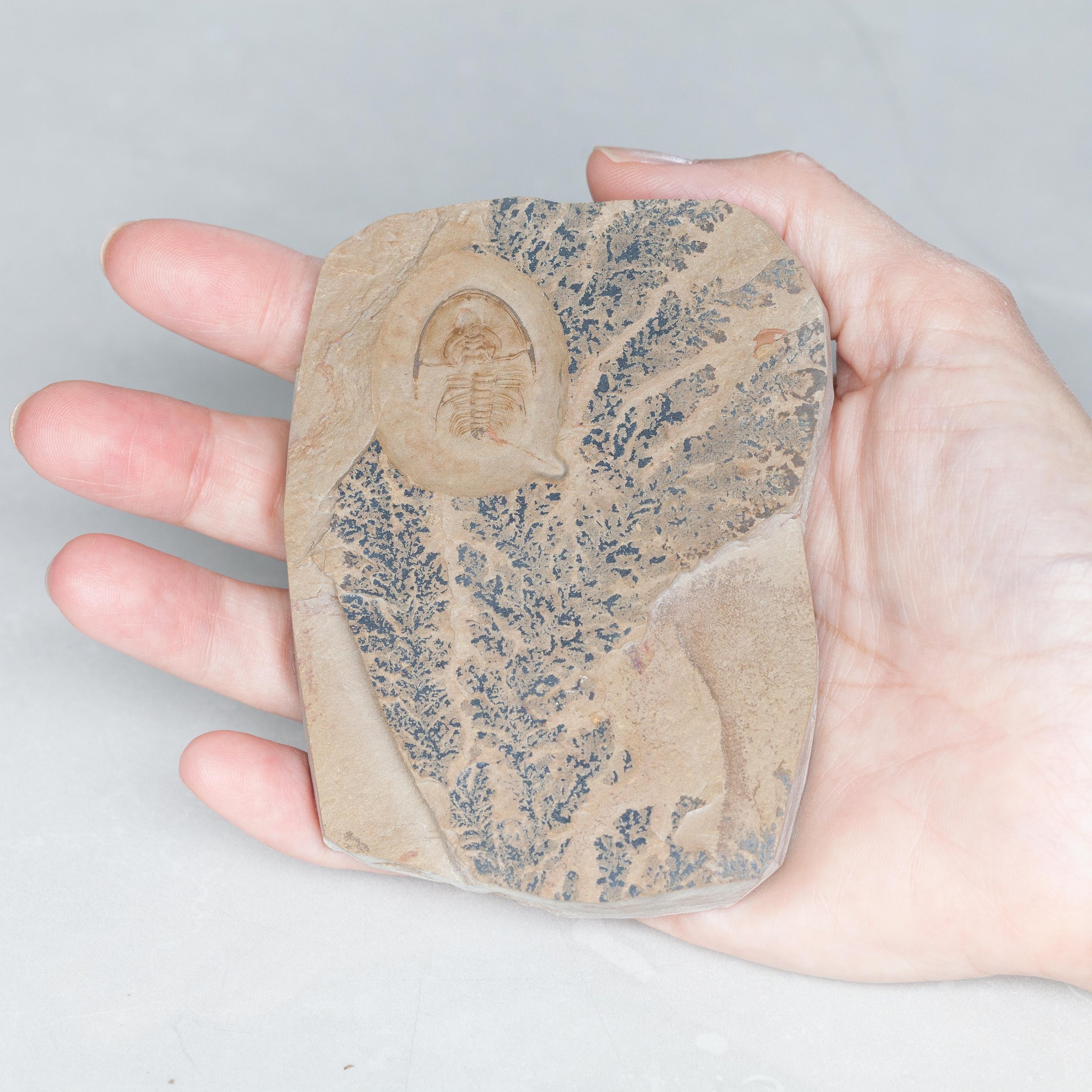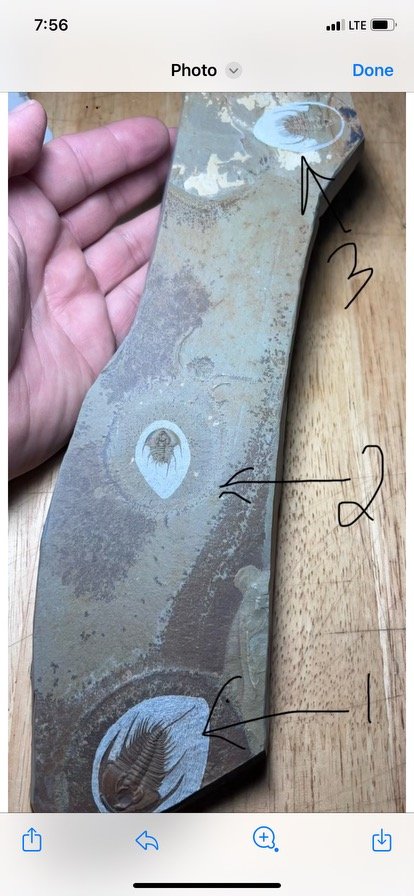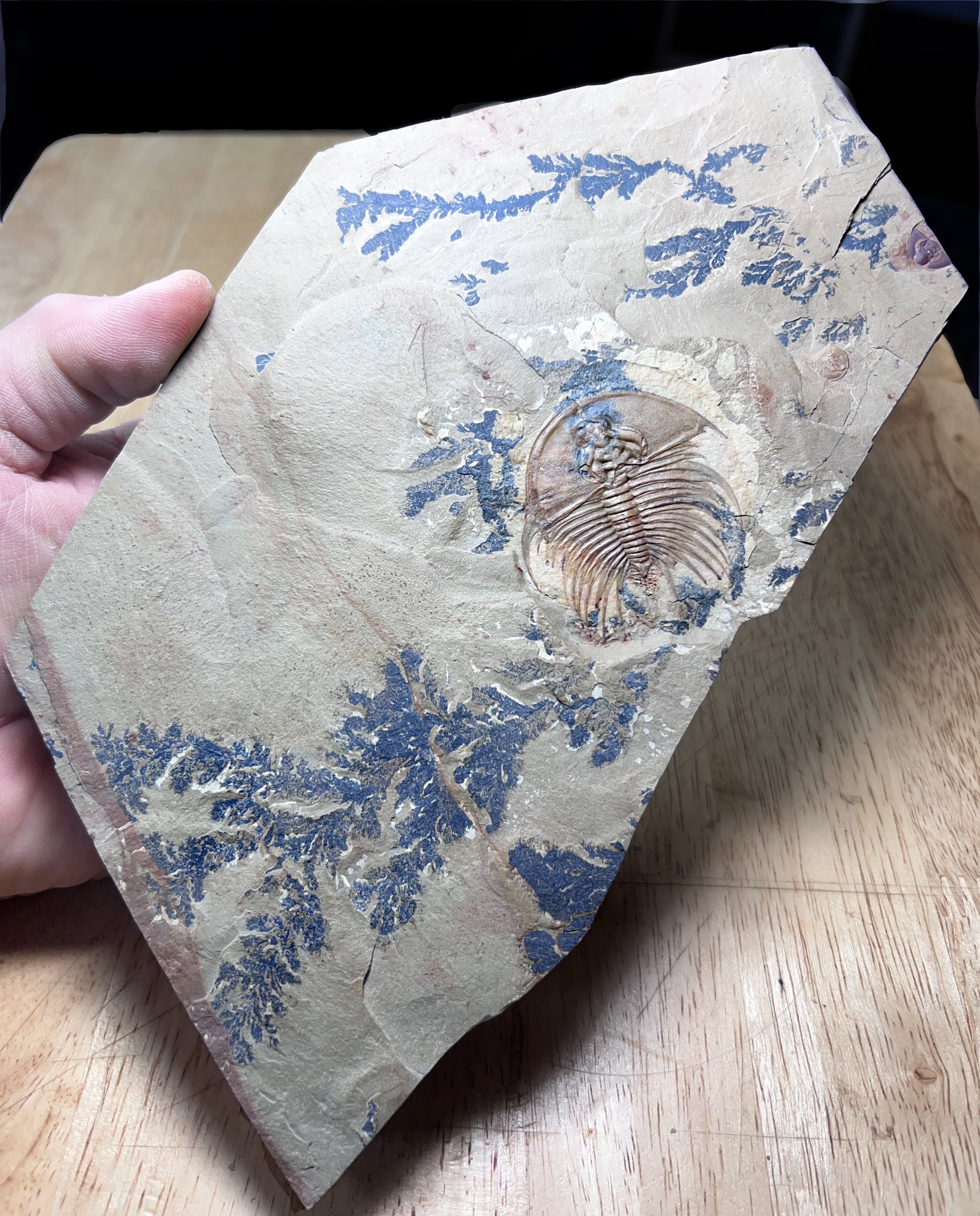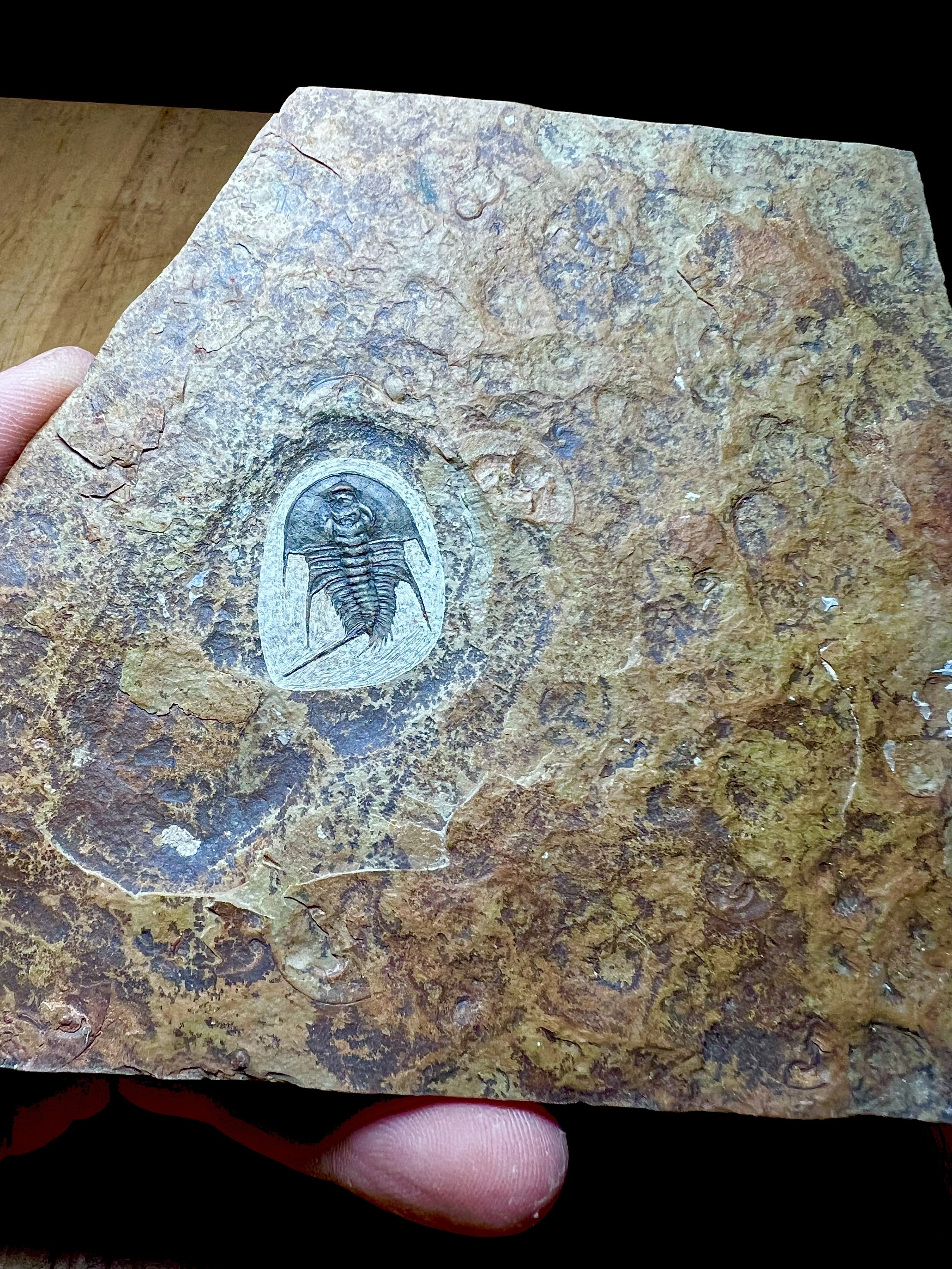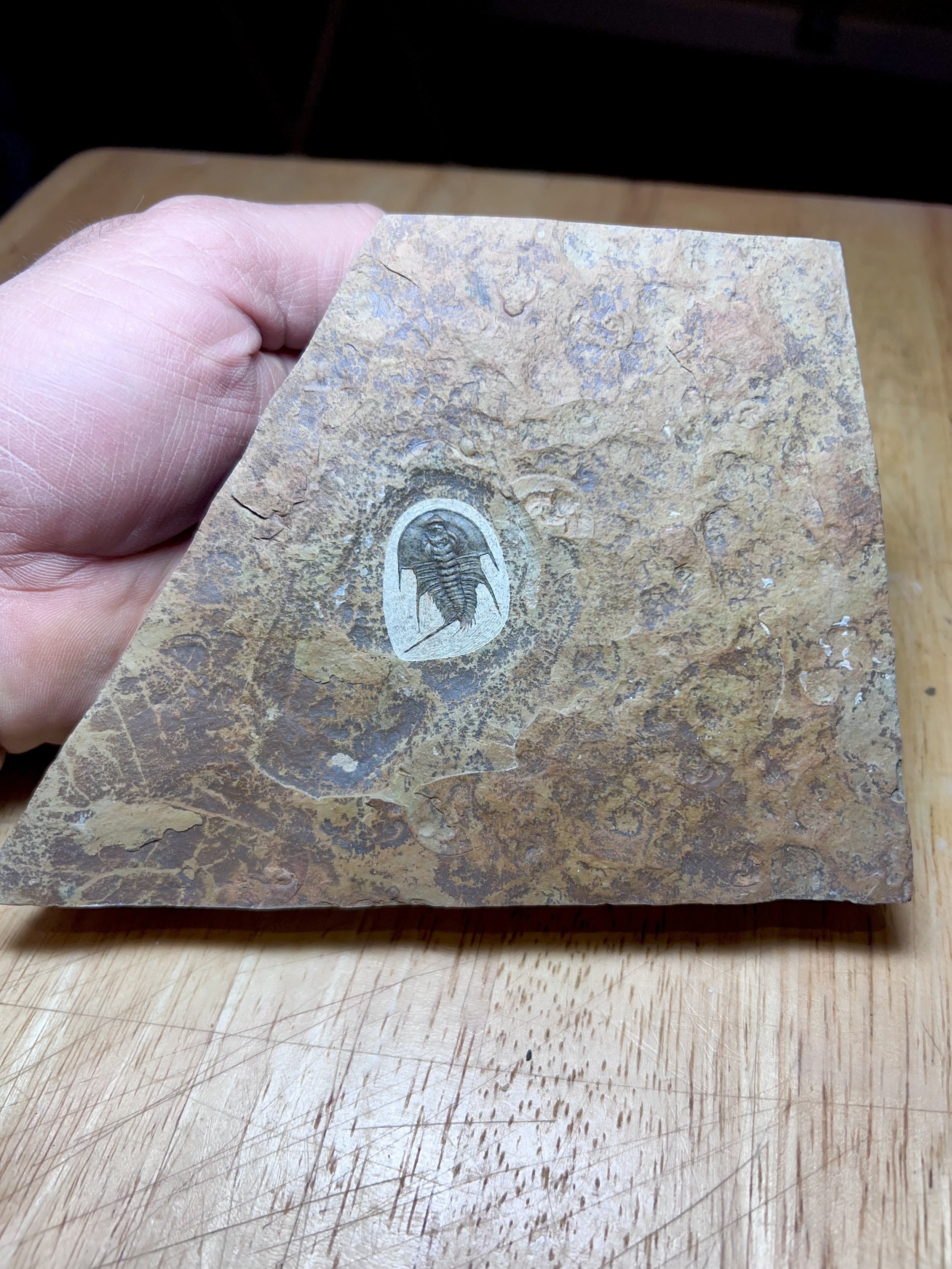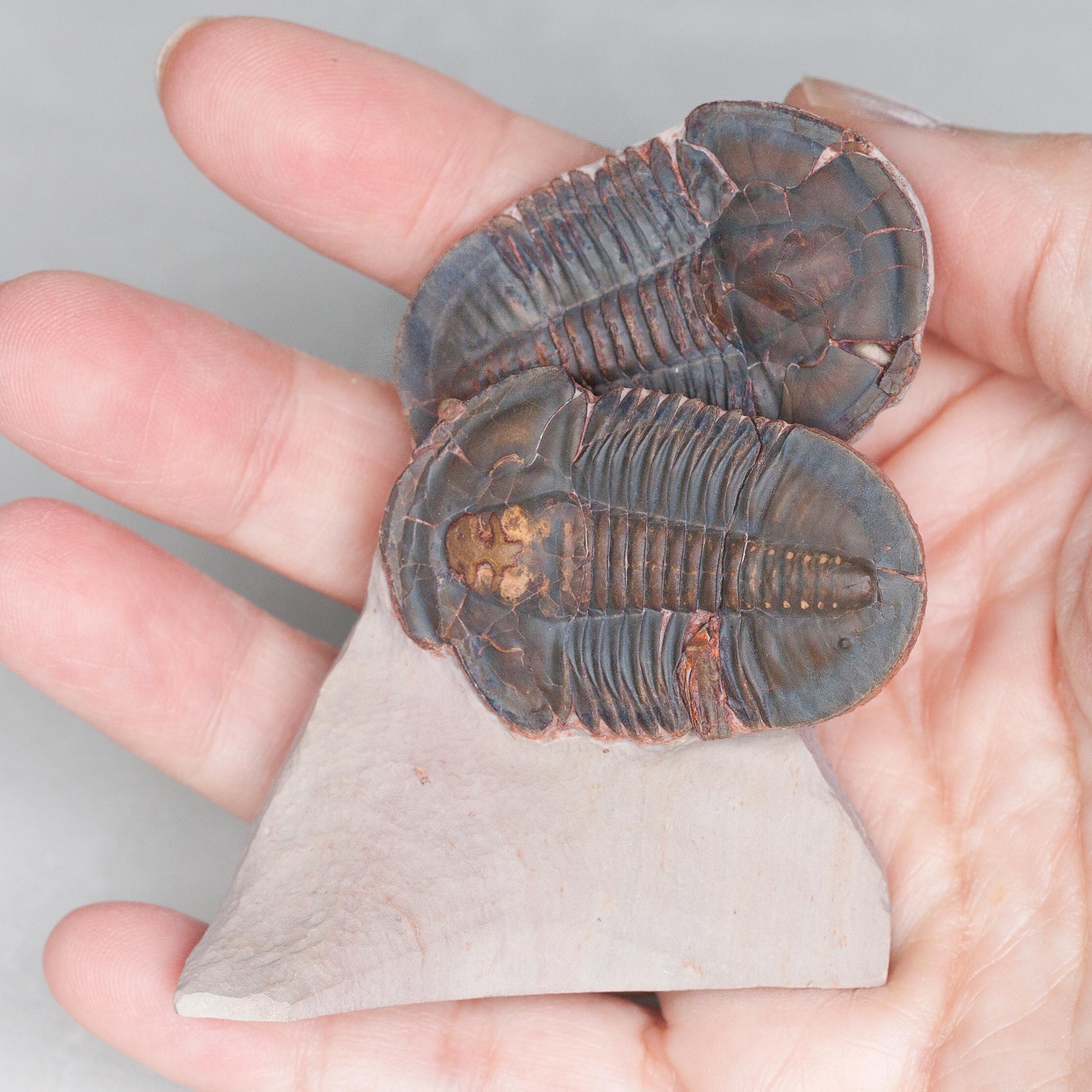Elrathia kingii - Pahvantia hastata
Vendor: Gold Bugs
SKU Number: SQ7163806
Elrathia kingii trilobite and a Pahvantia hastata radiodont head shield from the sought after Middle Cambrian, Wheeler Shale ”Red Beds” locality in Utah.
Exceedingly rare association of Pahvantia (Anomalocaris close cousin!) and a very large and strikingly red Elthria trilobite. The Elrathia trilobite is approaching the maximum size for this species and is well preserved with vivid natural colorization. Also on the plate is the head shield of the radiodont Pahvantia hastata, a close cousin to the famous and sought after Anomalocaris. Even pieces and parts of radiodonts as fossils are extremely rare due to the animal’s low preservation potential.
Full dimensions are listed below.
Vendor: Gold Bugs
SKU Number: SQ7163806
Elrathia kingii trilobite and a Pahvantia hastata radiodont head shield from the sought after Middle Cambrian, Wheeler Shale ”Red Beds” locality in Utah.
Exceedingly rare association of Pahvantia (Anomalocaris close cousin!) and a very large and strikingly red Elthria trilobite. The Elrathia trilobite is approaching the maximum size for this species and is well preserved with vivid natural colorization. Also on the plate is the head shield of the radiodont Pahvantia hastata, a close cousin to the famous and sought after Anomalocaris. Even pieces and parts of radiodonts as fossils are extremely rare due to the animal’s low preservation potential.
Full dimensions are listed below.
Vendor: Gold Bugs
SKU Number: SQ7163806
Elrathia kingii trilobite and a Pahvantia hastata radiodont head shield from the sought after Middle Cambrian, Wheeler Shale ”Red Beds” locality in Utah.
Exceedingly rare association of Pahvantia (Anomalocaris close cousin!) and a very large and strikingly red Elthria trilobite. The Elrathia trilobite is approaching the maximum size for this species and is well preserved with vivid natural colorization. Also on the plate is the head shield of the radiodont Pahvantia hastata, a close cousin to the famous and sought after Anomalocaris. Even pieces and parts of radiodonts as fossils are extremely rare due to the animal’s low preservation potential.
Full dimensions are listed below.
Additional Information
Elrathia kingii is one of the most common trilobites of the Middle Cambrian, wheeler Shale formation in Utah. Its more familiar form is a compressed dark gray mineralized carapace on a mid to dark gray shale. However, the Wheeler Shale has many facies including calcareous shale, shaley limestone, mudstone and thin, flaggy limestone that create amazingly colorful contrasts of reds, yellows, browns and greens.
The rock color combinations are caused by a variety of minerals, including iron and organic carbon. The color of sedimentary rocks reflect the depositional environments, including oxygen levels, organic matter, sedimentation rate, etc. Color is also influenced by transition metals such as iron, magnesium, copper, zinc, titanium and many others. E. kingii is a medium-sized trilobite with a smooth sub-ovate carapace that is tapered towards the rear. Thorax is usually 13 segments. Pygidium has four axial rings and a long terminal piece. Posterior margin of the pygidium has a long broad medial notch.
References:
Pahvantia hastata was a Radiodont with raptorial fore-limbs used for filter feeding on microscopic organisms floating near the ocean surface. It has been suggested that the first planktonic animals in the Cambrian initiated the biological pump, which, in turn, fueled the diversification of complex animal communities on the seafloor.
The Radiodonts were a group of Arthropods that appeared early in the Cambrian and appear to have been the first free-swimming raptorial predators, a role subsequently taken on by animals such as Sharks, Fish, Squid, and marine Tetrapods, which appeared to place them firmly at the top of the Cambrian food-chain. These Radiodonts had rather complex exoskeletons, which tended to become disarticulated before being preserved.
Recently, large Radiodonts from the early Cambrian have been discovered that have feeding organs adapted not for raptorial predation but for filter feeding. Filter feeding has repeatedly appeared in the largest members of other groups of raptorial marine predators, including Sharks, Whales and several types of Fish, making this a predictable occurrence in large raptorial Radiodonts, a view that was supported by the discovery of a second such species, the two meter long Aegirocassis from the Early Ordovician.
References:
Pahvantia hastata - Sciency Thoughts
Pahvantia hastata - University of New England


